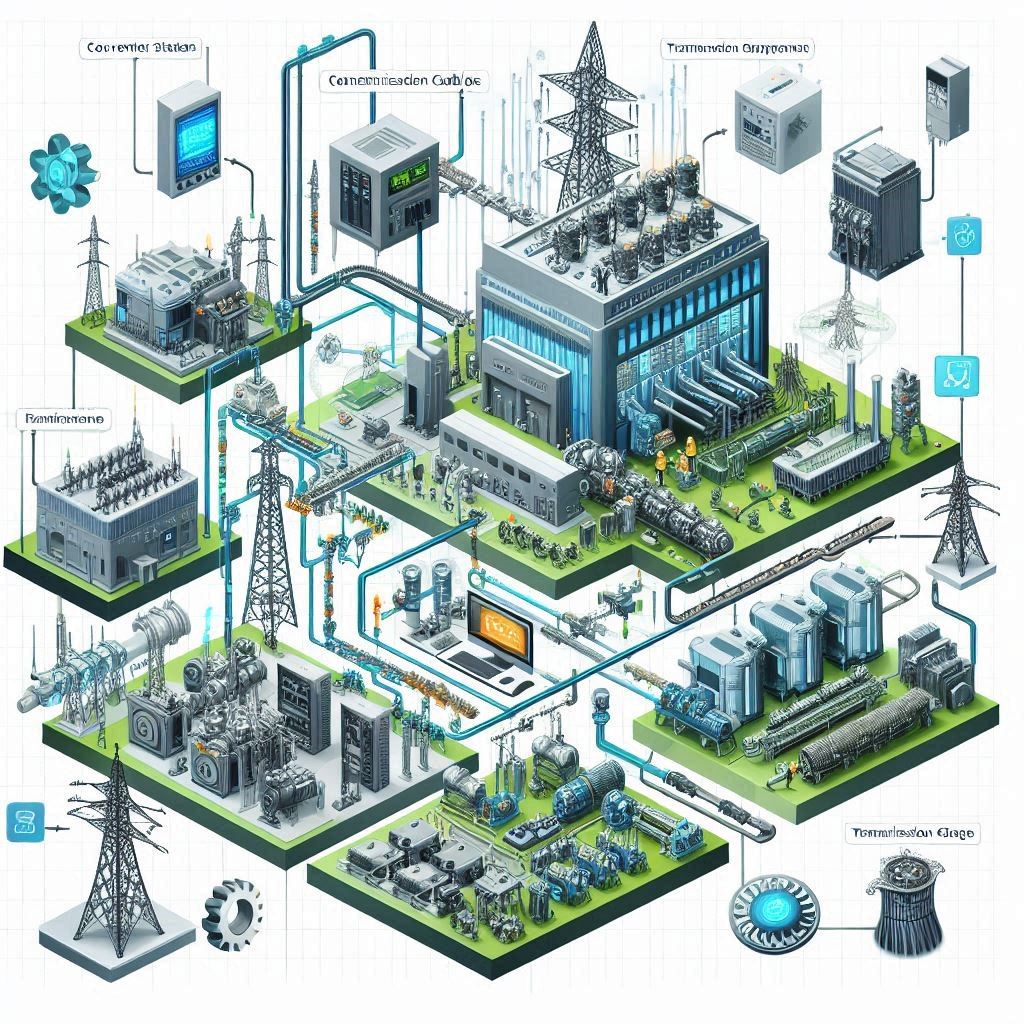High Voltage Direct Current (HVDC) transmission technology has gained significant attention in recent years due to its numerous advantages over traditional Alternating Current (AC) systems. As the world moves towards renewable energy integration and smarter grid solutions, HVDC presents a transformative opportunity for enhancing power transmission efficiency, reliability, and sustainability. This article explores the key benefits and opportunities associated with HVDC transmission.
The HVDC Transmission Industry is expected to reach USD 14.9 billion by 2028 from USD 11.4 billion in 2023, at a CAGR of 5.4% during the 2023–2028 period. The increasing number of VSC-based HVDC projects, growing adoption of renewable energy globally, surging demand for reliable power supplies, and favorable government policies and initiatives for HVDC transmission are the major factors driving the market growth. Furthermore, constantly increasing technological advancements related to converter station components such as valves, circuit breakers, and reactors, among others, are also fueling the market growth for HVDC transmission. Moreover, the growing need for integration of power grids globally for seamless electricity exchange is expected to provide growth opportunities for market players.
1. Increased Efficiency and Reduced Losses
One of the most compelling advantages of HVDC transmission is its ability to transmit electricity over long distances with minimal losses. Unlike AC systems, which suffer from resistive losses and reactance issues, HVDC systems experience significantly lower power losses. This efficiency is particularly crucial for connecting remote renewable energy sources, such as offshore wind farms or solar plants in rural areas, to urban centers. By reducing energy loss during transmission, HVDC not only enhances overall system efficiency but also lowers operational costs for utility providers.
2. Enhanced Grid Stability and Reliability
HVDC transmission systems contribute to greater grid stability by allowing for better control of power flows. The technology enables operators to manage the transmission of electricity more effectively, ensuring that supply meets demand in real-time. HVDC can quickly respond to fluctuations in power generation and consumption, making it a valuable asset in maintaining grid reliability. Furthermore, HVDC systems can interconnect asynchronous grids, allowing for the integration of different regional grids without compromising stability. This capability is essential in today’s complex energy landscape, where the demand for reliability is ever-increasing.
Download PDF Brochure @ https://www.marketsandmarkets.com/pdfdownloadNew.asp?id=1225

3. Facilitating Renewable Energy Integration
As nations strive to meet climate targets and transition to greener energy sources, the role of HVDC transmission in facilitating renewable energy integration becomes increasingly important. HVDC systems can efficiently connect large-scale renewable energy projects to existing power grids, thus overcoming geographical and infrastructural challenges. For instance, the transmission of electricity generated by offshore wind farms can be effectively managed through HVDC, enabling the transfer of power across long distances without significant losses. This not only accelerates the adoption of renewable energy but also contributes to a more sustainable energy future.
4. Flexibility and Scalability
Another significant benefit of HVDC technology is its flexibility and scalability. HVDC systems can be designed to accommodate future expansions or modifications, making them an attractive choice for evolving energy demands. As cities grow and energy consumption patterns change, HVDC infrastructure can be adapted to meet new requirements without extensive overhauls. This adaptability positions HVDC as a future-proof solution that can evolve alongside advancements in energy technologies and grid management systems.
5. Economic Opportunities and Job Creation
The growth of the HVDC transmission market presents substantial economic opportunities. As countries invest in upgrading their energy infrastructure to include HVDC systems, there will be an increased demand for skilled workers in engineering, manufacturing, and installation. This transition not only creates jobs but also stimulates innovation and growth within the energy sector. Companies specializing in HVDC technology can leverage this trend to expand their market presence and contribute to a sustainable energy ecosystem.
6. Addressing Environmental Concerns
HVDC transmission also offers environmental benefits by reducing the need for extensive power infrastructure, such as overhead transmission lines. By facilitating the underground transmission of electricity, HVDC systems can minimize land use and reduce the visual impact of power lines. Additionally, the efficient transmission of renewable energy sources through HVDC contributes to a decrease in greenhouse gas emissions, aligning with global efforts to combat climate change.
The benefits and opportunities presented by HVDC transmission technology are significant and multifaceted. From increasing efficiency and reliability to facilitating renewable energy integration and driving economic growth, HVDC systems are poised to play a crucial role in the future of global energy transmission. As governments and energy providers continue to prioritize sustainability and innovation, the adoption of HVDC technology will likely accelerate, paving the way for a more resilient and environmentally friendly power grid. By embracing HVDC transmission, the energy sector can not only enhance its operational capabilities but also contribute to a sustainable energy future
FAQ:
1. What is HVDC transmission?
High Voltage Direct Current (HVDC) transmission is a technology used to transmit electricity over long distances using direct current. Unlike traditional Alternating Current (AC) systems, HVDC systems allow for more efficient and stable power transmission.
2. How does HVDC transmission improve efficiency?
HVDC transmission reduces energy losses associated with long-distance power transmission. It minimizes resistive losses and avoids issues related to reactance, making it a more efficient option for transporting electricity from remote renewable energy sources to urban areas.
3 What is the future outlook for HVDC transmission?
As the energy sector continues to prioritize sustainability and reliability, the adoption of HVDC technology is expected to grow. This trend will likely lead to increased investments in HVDC infrastructure, further enhancing its role in global energy transmission.
